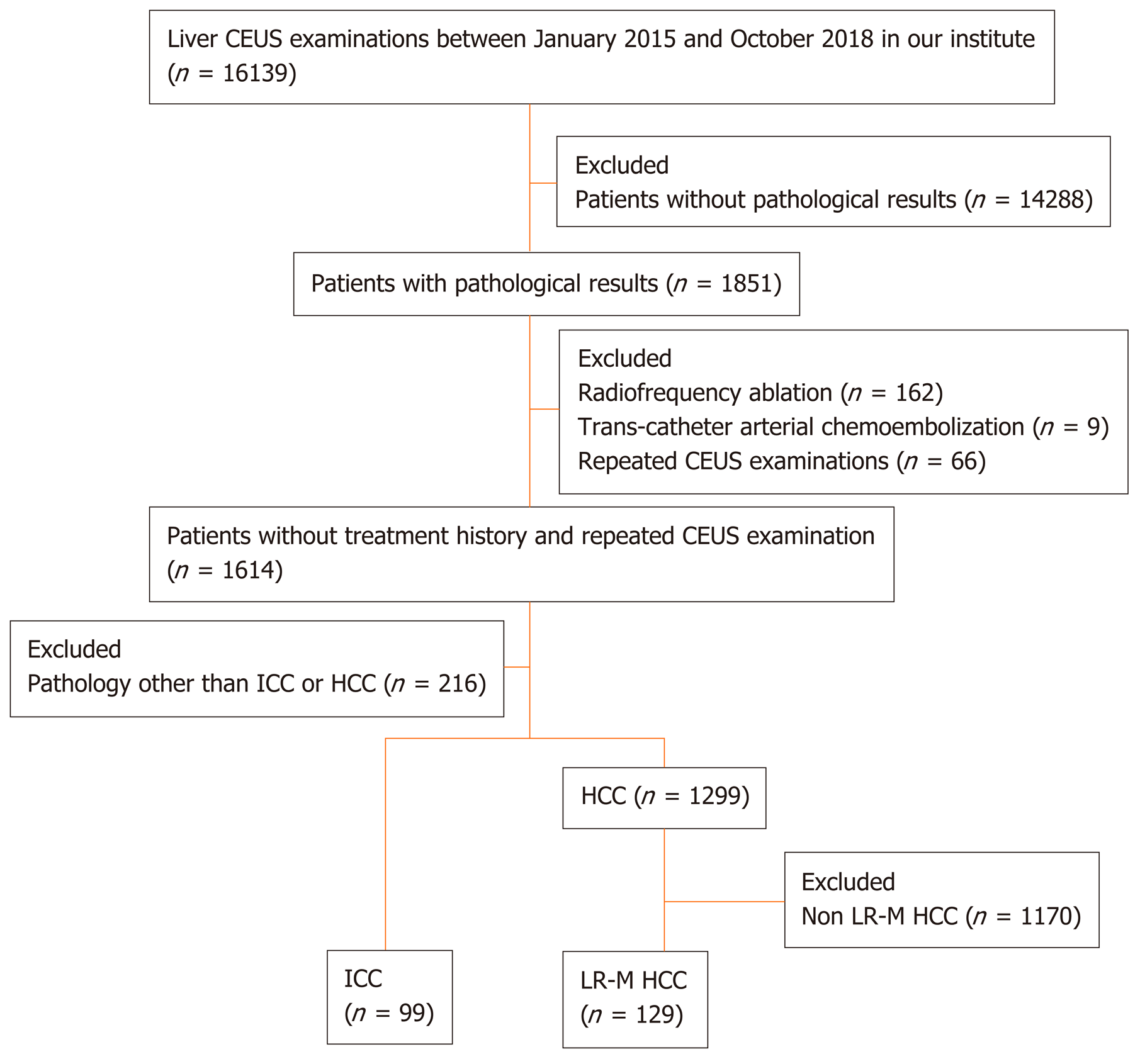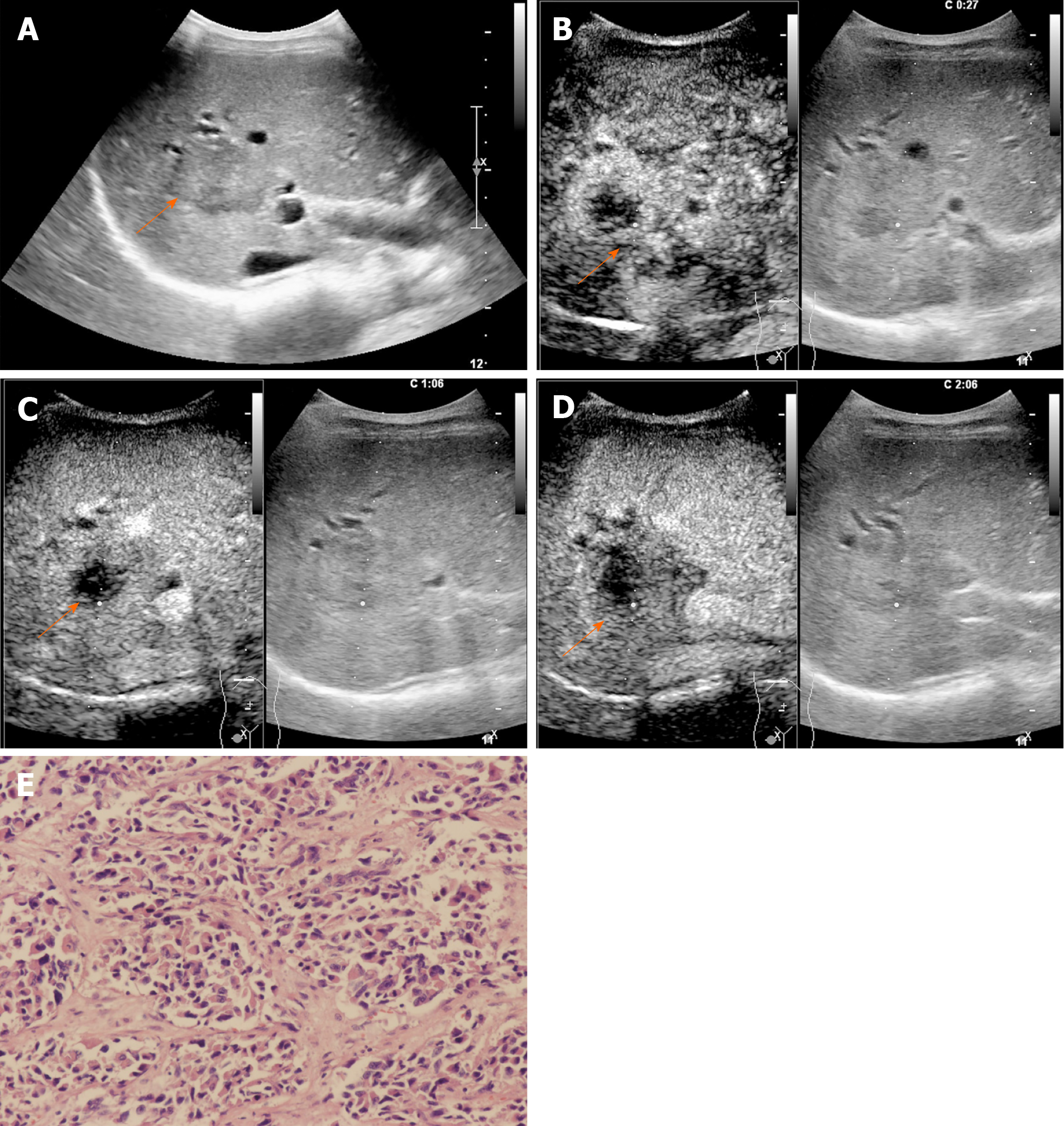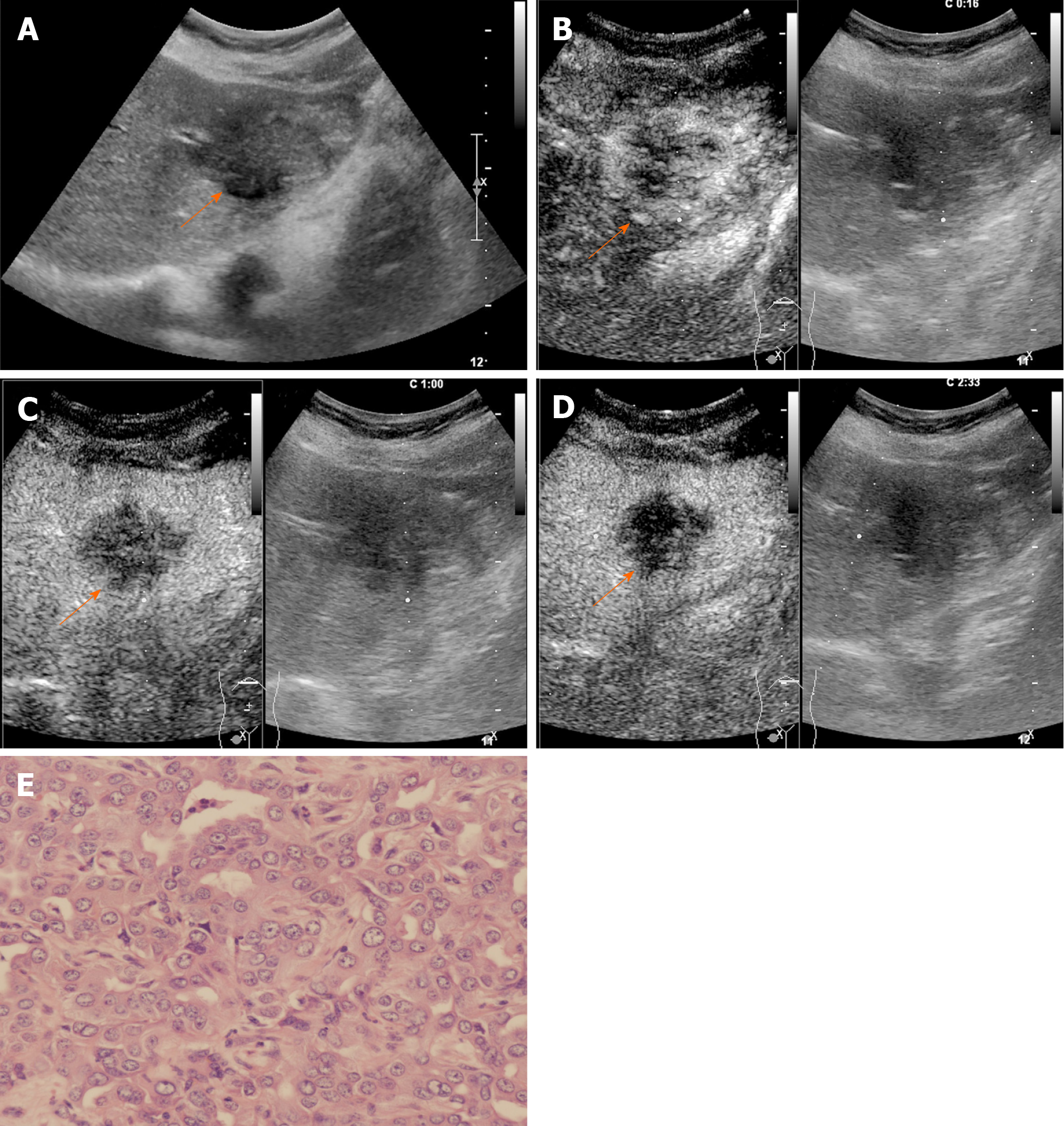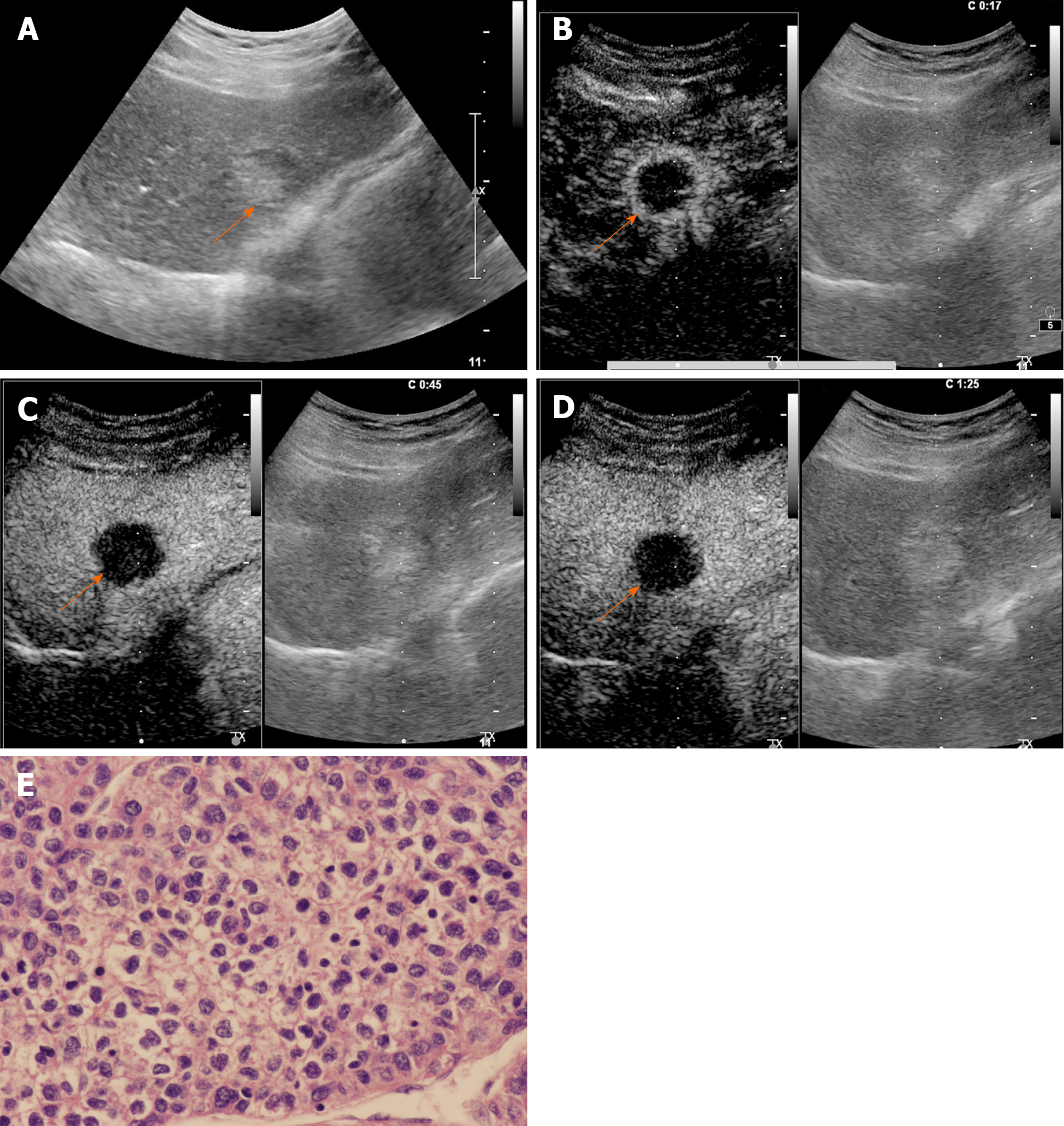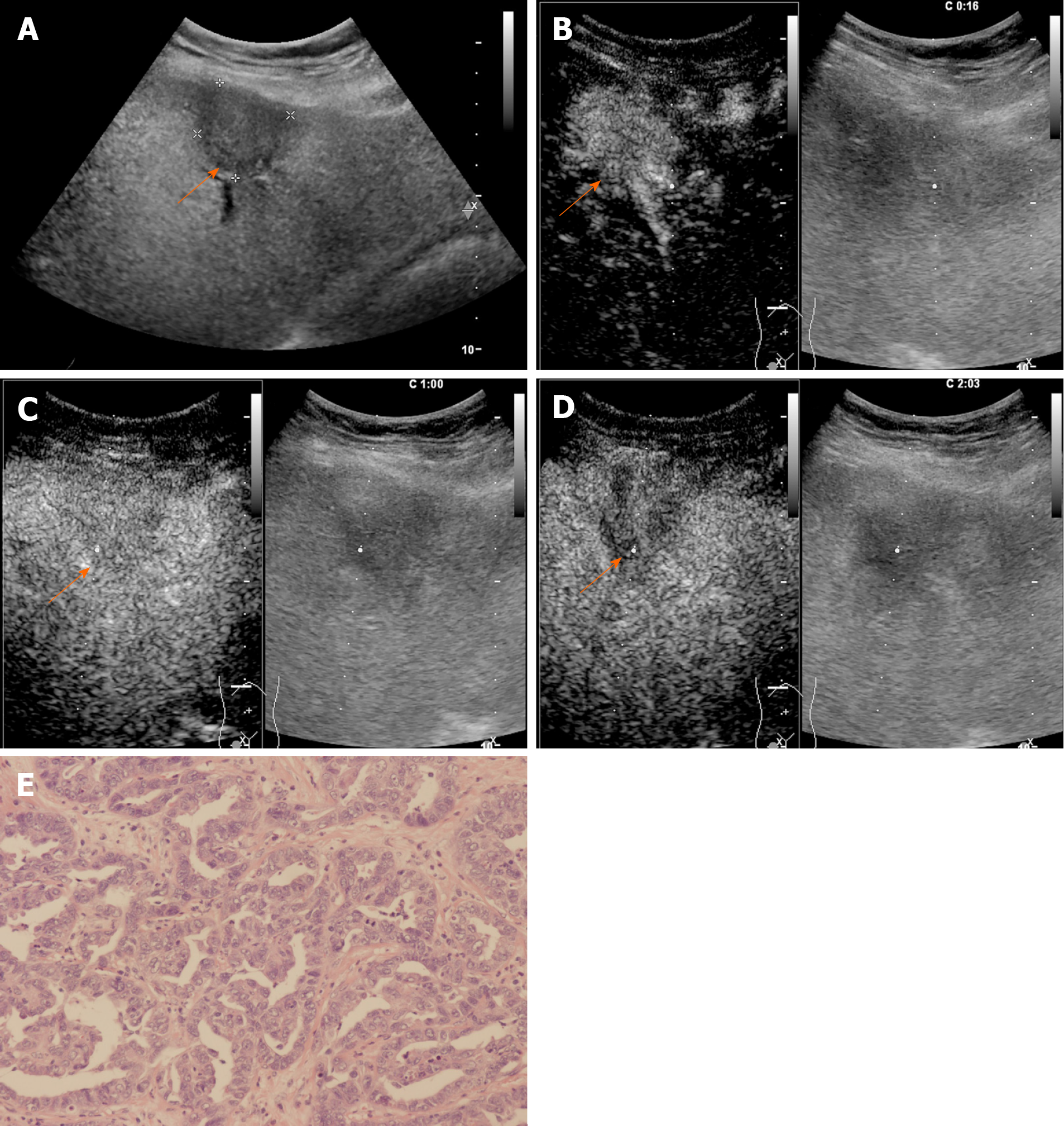Copyright
©The Author(s) 2020.
World J Gastroenterol. Jul 21, 2020; 26(27): 3938-3951
Published online Jul 21, 2020. doi: 10.3748/wjg.v26.i27.3938
Published online Jul 21, 2020. doi: 10.3748/wjg.v26.i27.3938
Figure 1 Flow chart of participant inclusion.
CEUS: Contrast-enhanced ultrasound; HCC: Hepatocellular carcinoma; ICC: Intrahepatic cholangiocarcinoma.
Figure 2 A 54-year-old female patient with a lesion categorized as LR-M.
A: Conventional grayscale ultrasound detected a hypoechoic nodule (arrow) 3.6 cm in diameter in the right lobe of the liver; B: Rim arterial phase hyperenhancement (APEH) (arrow) in the arterial phase was demonstrated by contrast-enhanced ultrasound; C and D: No washout (arrow) was observed in the early portal phase (by 60 s), and no marked washout (arrow) was observed by 126 s after SonoVue injection. This lesion was designated as LR-M because of rim APEH in the arterial phase; E: Poorly differentiated intrahepatic cholangiocarcinoma was confirmed by histopathology (hematoxylin and eosin staining, × 200).
Figure 3 A 46-year-old female patient with an LR-M lesion.
A: A hypoechoic nodule (arrow) measuring 4.7 cm in diameter was identified in the left lobe of the liver by conventional grayscale ultrasound; B: Peripheral rim-like arterial phase hyperenhancement (arrow) in the arterial phase was demonstrated by contrast-enhanced ultrasound; C: Early washout (arrow) was observed in the portal phase; D: No marked washout (arrow) was displayed until 155 s after SonoVue injection; E: Poorly differentiated ICC was confirmed by histopathology (hematoxylin and eosin staining, × 200).
Figure 4 Contrast-enhanced ultrasound examination of a 68-year-old male patient with chronic hepatitis B infection.
A: Conventional grayscale ultrasound demonstrated a mixed echo nodule (arrow) measuring 3.0 cm in diameter in the left lobe of the liver; B: Contrast-enhanced ultrasound illustrated rim arterial phase hyperenhancement (arrow) in the arterial phase; C: Early washout of the contrast agent within 60 s was observed (arrow); D: Late-phase imaging demonstrated marked contrast washout (arrow) within 120 s. The lesion was classified as LR-M due to the aforementioned features; E: The nodule was revealed to be poorly differentiated hepatocellular carcinoma by histopathology (hematoxylin and eosin staining, × 400).
Figure 5 A 69-year-old female patient with an LR-M lesion.
A: A hypoechoic nodule measuring 3.2 cm in diameter (arrow) was observed by conventional grayscale ultrasound in the left lobe of the liver; B: Contrast-enhanced ultrasound illustrated homogeneous hyperenhancement (arrow) in the arterial phase; C: Early washout was demonstrated (arrow) at 60 s after SonoVue injection; D: No marked washout (arrow) was observed by 120 s; E: This lesion was classified as LR-M, and moderately differentiated intrahepatic cholangiocarcinoma was confirmed by histopathology (hematoxylin and eosin staining, × 200).
- Citation: Huang JY, Li JW, Ling WW, Li T, Luo Y, Liu JB, Lu Q. Can contrast enhanced ultrasound differentiate intrahepatic cholangiocarcinoma from hepatocellular carcinoma? World J Gastroenterol 2020; 26(27): 3938-3951
- URL: https://www.wjgnet.com/1007-9327/full/v26/i27/3938.htm
- DOI: https://dx.doi.org/10.3748/wjg.v26.i27.3938









